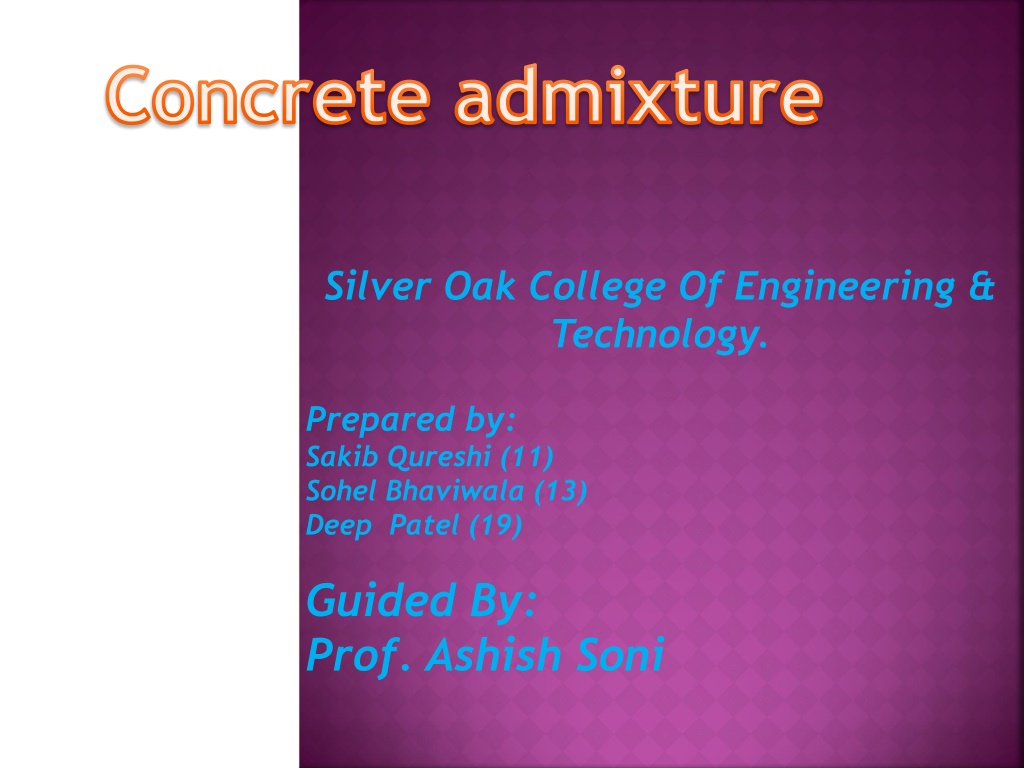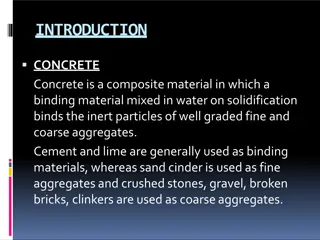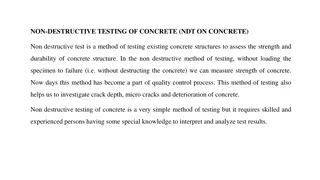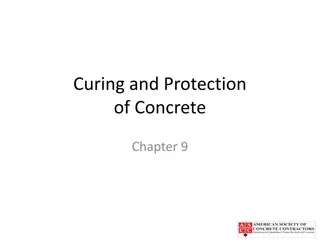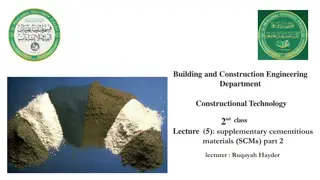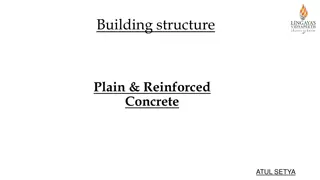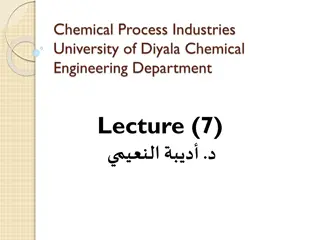Understanding Concrete Admixtures for Improved Performance
Chemical admixtures play a crucial role in enhancing the quality and durability of concrete construction. They help in modifying concrete properties, reducing costs, and ensuring consistent quality during various stages of concrete operations. Air-entraining admixtures improve concrete durability against freeze-thaw cycles, while water-reducing admixtures enhance concrete strength using less water. Retarding admixtures slow down the concrete setting time, offering flexibility in construction activities. Learn about the types and benefits of concrete admixtures for efficient construction practices.
Uploaded on Sep 26, 2024 | 0 Views
Download Presentation

Please find below an Image/Link to download the presentation.
The content on the website is provided AS IS for your information and personal use only. It may not be sold, licensed, or shared on other websites without obtaining consent from the author. Download presentation by click this link. If you encounter any issues during the download, it is possible that the publisher has removed the file from their server.
E N D
Presentation Transcript
Concrete admixture Silver Oak College Of Engineering & Technology. Prepared by: Sakib Qureshi (11) Sohel Bhaviwala (13) Deep Patel (19) Guided By: Prof. Ashish Soni
Chemical admixtures are the ingredients in concrete other than Portland cement, water, and aggregate Producers use admixtures primarily to reduce the cost of concrete construction To modify the properties of hardened concrete To ensure the quality of concrete during mixing, transporting, placing, and curing And to overcome certain emergencies during concrete operations.
Air-entraining admixtures are used to stabilize microscopic air bubbles in concrete. Proper air-entrainment, with appropriate volume and spacing factor, will dramatically improve the durability of concrete exposed to moisture during cycles of freezing and thawing. Entrained air also improves concrete s resistance to surface scaling caused by chemical deicers.
Water-reducing admixtures usually reduce the required water content for a concrete mixture by about 5 to 10 percent. Consequently, concrete containing a water-reducing admixture needs less water to reach a required slump than untreated concrete. The treated concrete can have a lower water- cement ratio. This usually indicates that a higher strength concrete can be produced without increasing the amount of cement
Retarding admixtures are used to slow down the speed of the reaction between cement and water by affecting the growth of the hydration products and/or reducing the rate of water penetration to the cement particles. The use of a retarder will increase the setting time and may delay strength development of the concrete.
Retarders can be used: in hot weather to prevent early stiffening; to increase working life, especially when used in conjunction with superplasticisers; to allow the placing of a large pour of concrete over several hours; to place concrete in layers without cold joints; to extend the time between mixing and placing (e.g., for long transport time); prevent setting of the concrete in the truck in case of delay.
Accelerating admixtures increase the rate of early strength development, reduce the time required for proper curing and protection, and speed up the start of finishing operations. Accelerating admixtures are especially useful for modifying the properties of concrete in cold weather.
CORROSION INHIBITORS Corrosion inhibitors are used in concrete for parking structures, marine structures, and bridges where chloride salts are present. The chlorides can cause corrosion of steel reinforcement in concrete
COLORING ADMIXTURES (PIGMENTS) Natural and synthetic materials are used to color concrete for aesthetic and safety reasons Red concrete is used around buried electrical or gas lines as a warning to anyone near these facilities. Yellow concrete safety curbs are used in paving applications. Generally, the amount of pigments used in concrete should not exceed 10% by weight of the cement. Pigments used in amounts less than 6% generally do not affect concrete properties.
SHRINKAGE-REDUCING ADMIXTURES Shrinkage-reducing admixtures, introduced in the 1980s, have potential uses in bridge decks, critical floor slabs, and buildings where cracks and curling must be minimized for durability or aesthetic reasons
Finely divided admixture are powdered or pulverized materials added to concrete before or during mixing to improve or change some of the plastic or hard properties of portland concrete cement
